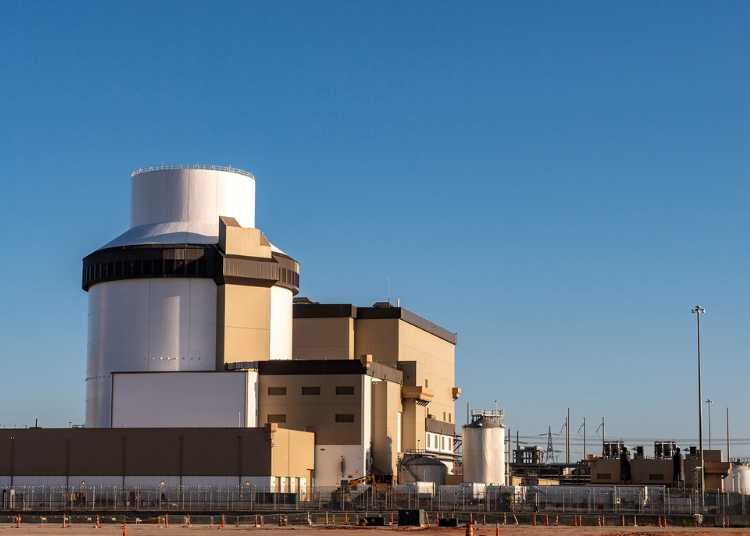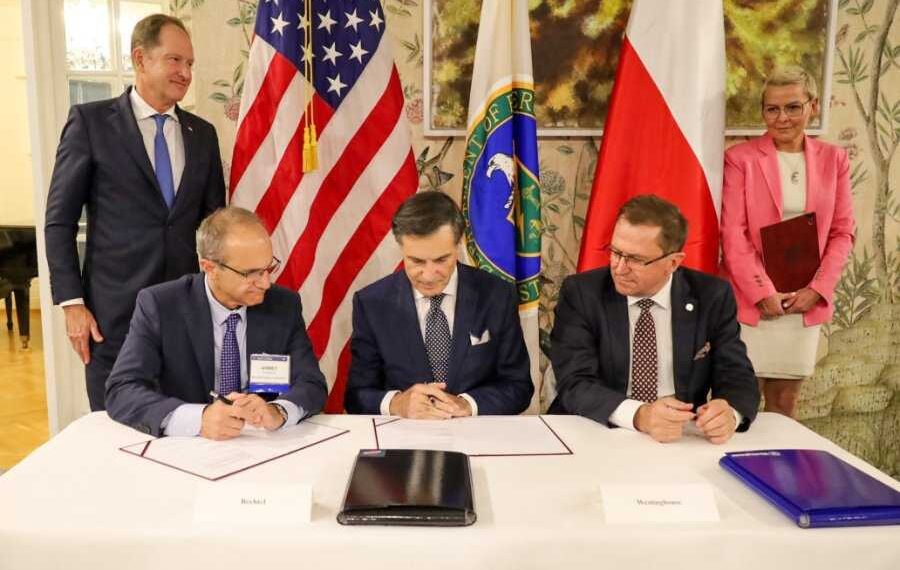Westinghouse Electric Company and Bechtel have recently entered into a formal agreement to collaborate on the design and construction of Poland’s inaugural nuclear power plant, which is planned for the Lubiatowo-Kopalino site in Pomerania.
This agreement represents a significant step forward in the progression toward the operationalization of Poland’s first AP1000® nuclear reactor, with a target date of 2033 for commercial operation.
The First Nuclear Plant in Poland – Background and Details
In November 2022, the Polish government made a pivotal decision by selecting the Westinghouse AP1000® reactor technology for its inaugural nuclear energy program.
The new nuclear plant is envisioned to house six AP1000 pressurized water reactors, boasting a collective generation capacity ranging from 6 GW to 9 GW.
Poland’s energy strategy entails the commencement of plant construction in the coming years, with the maiden unit anticipated to be commissioned in either 2032 or 2033.
Subsequent units are slated to follow, with the ambitious goal of operationalizing all six units by 2040. This endeavour aligns with Poland’s broader initiative to explore nuclear power and renewable energy sources to curb carbon emissions stemming from its power generation sector.
The development of the nuclear energy programme is one of the pillars of strengthening the energy transition Polish. The nuclear energy development program is described in two key government documents on the country’s energy strategy:
- The Polish nuclear energy program, the current version of which was adopted by the Council of Ministers on October 2, 2020. The document is a kind of “road map” for the construction of the first Polish nuclear power plant.
- Energy Policy Polish until 2040, approved by the Council of Ministers in 2021, this document serves as a guiding framework that defines the primary principles and assumptions underpinning Poland’s broader energy transformation. It encompasses a wide spectrum of energy-related considerations, including nuclear energy, and sets the stage for the country’s energy landscape up to the year 2040.
According to the International Energy Agency, in 2021 more than 87% of Poland’s electricity was generated from either coal, natural gas, or oil. The remaining was generated from Hydro (0.2%), Biofuels and Waste (10.8%), Wind and Solar (1.7%).

The First Nuclear Plant in Poland – The AP1000 Reactor
The AP1000 reactor stands out as a remarkable technological achievement in nuclear power. It holds the distinction of being the sole Generation III+ reactor in operation, featuring fully passive safety systems, a modular construction design, and the most compact footprint per MWe (Megawatt-electric) available on the market.
In the United States, the AP1000 has already proven its mettle. At the Vogtle site in Georgia, one AP1000 unit is actively generating power for the grid, while a second unit recently completed its initial fuel load. Commercial operations for this unit are expected to commence later this year or in early 2024.
Furthermore, in China, four AP1000 reactors are currently in operation, setting records for operational performance and availability. Moreover, ongoing construction efforts for an additional six AP1000 reactors in China exist.
Beyond the United States and China, the AP1000 technology is making strides worldwide. Bulgaria, for instance, has chosen the AP1000 for its new reactor program, marking a significant step forward.
Additionally, the AP1000 is being considered for deployment at various sites in Central and Eastern Europe, the United Kingdom, and North America, underscoring its growing global significance in nuclear energy.

The First Nuclear Plant in Poland – Bechtel-Westinghouse JV next steps
Following the execution of the consortium agreement, the Bechtel-Westinghouse JV is expected to sign an an engineering services contract with Polish utility Polskie Elektrownie Jądrowe (PEJ) .
PEJ operates as a special-purpose vehicle, wholly owned by the State Treasury. It is in charge of the development of nuclear power plants within Poland, and its core responsibilities are:
- Preparation of the Investment Process: PEJ takes on the role of an investor in the project for the construction of Poland’s inaugural nuclear power plant. This involves financial and strategic planning to bring the project to fruition.
- Support for Government Administration: PEJ actively collaborates with government administration, assisting in various activities aligned with the goals of Poland’s nuclear energy program. This includes regulatory compliance and policy implementation.
- Building Public Support: PEJ plays a pivotal role in cultivating public support for the development of nuclear energy within Poland. This includes outreach, education, and communication initiatives to garner backing for nuclear power initiatives.













